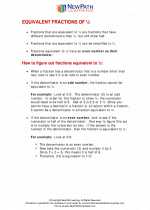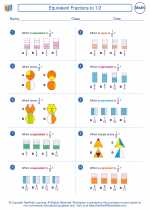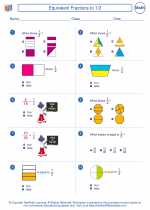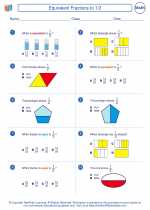Equivalent Fractions to 1/2
An equivalent fraction is a fraction that represents the same amount or value as another fraction. In this case, we are looking for fractions that are equivalent to 1/2.
To find equivalent fractions to 1/2, we can multiply or divide the numerator and the denominator by the same non-zero number. This will give us a new fraction that represents the same amount as 1/2.
Multiplying to Find Equivalent Fractions
To find equivalent fractions to 1/2 by multiplying, we can multiply both the numerator and the denominator by the same number. For example:
- 1/2 = 1 * 1 / 2 * 1 = 2/4 (multiply by 2)
- 1/2 = 1 * 2 / 2 * 2 = 2/4 (multiply by 2)
- 1/2 = 1 * 3 / 2 * 3 = 3/6 (multiply by 3)
- and so on...
Dividing to Find Equivalent Fractions
We can also find equivalent fractions to 1/2 by dividing the numerator and the denominator by the same number. For example:
- 1/2 = 1 / 2 = 1/4 (divide by 2)
- 1/2 = 1 / 2 = 2/4 (divide by 2)
- 1/2 = 1 / 2 = 3/6 (divide by 2)
- and so on...
There are infinitely many equivalent fractions to 1/2, as long as we multiply or divide the numerator and the denominator by the same non-zero number. These fractions all represent the same amount as 1/2, but are written in different forms.
. Create and Print your own Math Worksheetswith Math Worksheet Generator
◂Math Worksheets and Study Guides Third Grade. Equivalent Fractions to 1/2

 Worksheet/Answer key
Worksheet/Answer key
 Worksheet/Answer key
Worksheet/Answer key
 Worksheet/Answer key
Worksheet/Answer key
